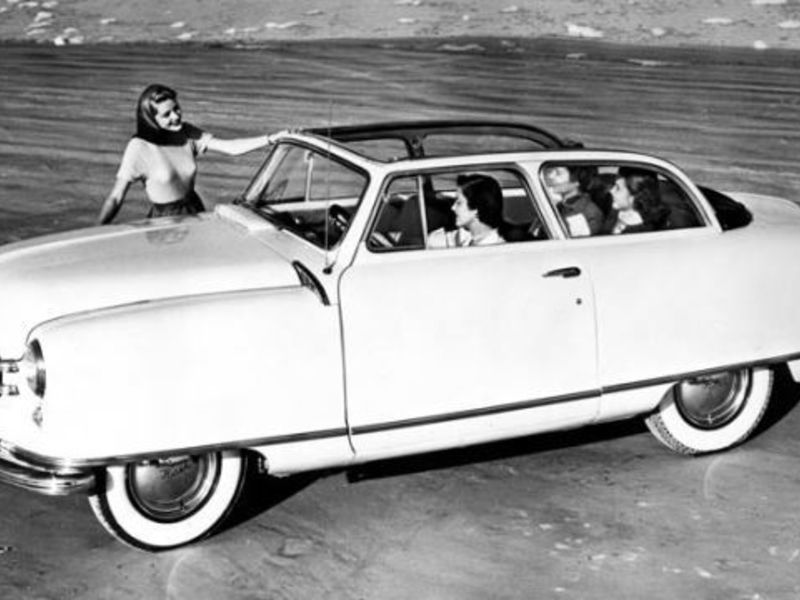
Nash-Kelvinator files trademarks for the Rambler and Statesman on May 22, 1950. Later that year, the Rambler, a nameplate first used in the early 1900s, became one of America’s first successful compacts, and part of the beginning of the end of Detroit’s one-size-fits-all approach to building and selling cars.
Nash-Kelvinator President George Mason recognized there was a glut of large and similar cars produced by larger Detroit rivals, and the company, based in Wisconsin, had to come up with alternatives.
The Rambler weighed less than competitors and sat on a 100-inch wheelbase that, even by current standards, is short. Power was delivered by a modest 173-cubic-inch, flathead six-cylinder engine that generated 82 hp.
The name Rambler was first used on a horseless carriage produced by the Thomas B. Jeffery Co. in 1902 through 1914. Charles Nash bought the Jeffery Co. in 1916, renamed the car Nash and created Nash Motors. Nash merged with kitchen appliance maker Kelvinator Corp. in 1937 to become Nash-Kelvinator Corp., based in Kenosha, Wis.
Modern Rambler
The year the modern Rambler was introduced, Nash renamed its line of cars to include the Statesman and Ambassador. The Rambler was originally slated to be the Diplomat, but Dodge claimed the name for a two-door hardtop. Nash instead chose Rambler to honor the original Jeffery Rambler.
American Motors was formed in 1954 when Nash and Hudson Motors merged, and the Rambler remained a source of pride for the new company.
AMC’s redesigned Rambler debuted in 1956 with a line of sedans, hardtops and wagons that were larger than previous Ramblers yet still smaller than Detroit models. The redesigned Rambler was a hit: AMC sold 91,469 Ramblers in 1957, and in 1959, sales jumped to 363,372.
In a 1955 speech, “The Dinosaur in the Driveway,” American Motors CEO George Romney blasted the competition’s “bigger is better” credo. “Cars 19 feet long, weighing two tons, are used to run a 118-pound housewife three blocks to the drugstore for a package of bobby pins and lipstick,” he lamented.
Then in 1959, Romney graced the cover of Time magazine to prod American consumers to trade in large cars for American Motors compacts. The title of the story: “Dinosaur Hunter.”
Romney, who joined Nash-Kelvinator in 1948, was managing director of the Automobile Manufacturers Association when the Federal Highway Administration completed its first study of automobile travel patterns. “The association analyzed the study in 1941 and concluded most car trips were 13 miles or less,” Romney said. “I was convinced a compact was the kind of car people wanted.”
“Mason developed the Rambler, and I sold it,” Romney said later. “The major difference between us was that Mason saw the Rambler as a small car supplement to a full-sized car line. I was convinced the compact was the car of the future.”
AMC dropped the Rambler name in 1969.